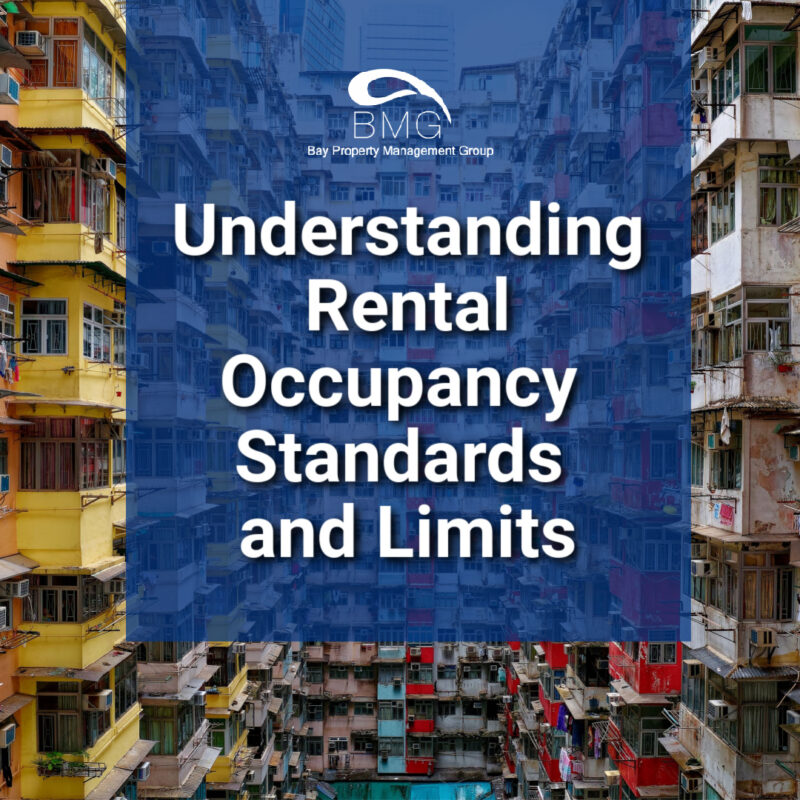
Landlords must create various policies and guidelines to maintain a safe and habitable property for all tenants. This can include everything from inspections and maintenance to applicant screening and beyond. One crucial factor for landlords to establish in their properties is rental occupancy standards. For landlords, most processes rely heavily on black and white laws that only require compliance rather than interpretation. However, understanding occupancy limits is not always so clear. Continue reading below as we explain existing rules and how to create rental occupancy standards for your property.
What are Rental Occupancy Standards According to the Law?
Simply put, rental occupancy standards or limits refer to the number of individuals that can reside in a particular unit. While basic standards are conveyed through the Department of Housing and the Fair Housing Act, landlords must realize that each state or jurisdiction may have additional guidelines. Typically, occupancy limits are set based on the number of bedrooms in the property, stating –
“Specifically, the Department believes that an occupancy policy of two persons per bedroom, as a general rule, is reasonable under the Fair Housing Act.”
That said, this is not a hard and fast rule and is, in fact, open to debate based on many factors. When reviewing cases regarding rental occupancy standards, HUD may consider additional circumstances such as –
- Size of the Bedrooms – If a “two-bedroom” rental has one significantly smaller bedroom, it may be deemed unsuitable for the “2 persons per bedroom” standard.
- Age of Children – For example, two adult parents with an infant may apply for a 1-bedroom apartment, and that may be ok. However, two adult parents with a teenager in a one-bedroom may violate the “2 persons per bedroom” standard. Therefore, age does play some role in occupancy decision-making.
- Unit Configuration and Square Footage – Depending on the unit’s overall size and its extra space, such as a den or convertible office, additional occupants beyond “2 persons per bedroom” may work.
- Other Property Specific Limitations – If the property has specific load-bearing limits on critical systems such as the septic, landlords may be able to prove a case for limited occupancy successfully.
A landlord must maintain a safe and habitable home. However, occupancy limits can create a slippery slope, and property owners must be diligent to avoid any potential Fair Housing claims of discrimination.
The Rental Occupancy Standards Every Landlord Need to Know
When it comes to rental occupancy standards, finding a clear-cut answer can be tricky. Since we have already discussed that the rule of 2 persons per bedroom is open to debate, let’s review some more detailed guidance. In addition to checking all applicable federal laws, landlords must be sure to research specifics in their own state or city. Take a look at the rules that can impact your rental business operations below.
- Fair Housing Act 1988 Updates
- The 1991 Keating Memo
- IPMC or International Property Maintenance Code
Fair Housing Act 1988 Updates
Back in 1988, the Fair Housing Act recognized familial status as one of its protected classes. Thus, helping families with children receive the same fair and non-discriminatory treatment when searching for a rental property. This new step created a need for landlords to consider reasonable family living situations above and beyond the general rental occupancy standards. Unfortunately for property owners and tenants, this led to some confusion.
In response to the growing confusion surrounding the 1988 changes to the Fair Housing Act, General Counsel Keating answered the call to more clearly define occupancy rules to prevent future discrepancies. This led to the 1991 Keating Memo, which HUD announced it would add to its guidelines in December 1998. This memo focused on what is reasonable and, while still not strictly defining it, offered some expanded guidance such as –
- Two-person per bedroom policies unless other rooms in the home can be habitable
- The size of bedrooms at the property can impact occupancy
- The two-person per bedroom rule may be negated in situations where the bedrooms are tiny
IPMC or International Property Maintenance Code
The International Property Maintenance Code sets forth more detailed rules wherever state and local laws fall short or do not apply due to the Fair Housing Act. Instead of a sweeping statement of 2 persons per bedroom, this code focuses on reasonable square footage as listed below –
- Any 1-person bedroom should have a minimum of 70 square feet.
- Shared bedrooms must have a minimum of 50 square feet per person.
- Occupants may not use kitchens or other non-habitable rooms as a bedroom.
In addition to the rental occupancy standards above regarding sleeping spaces, this code goes one step further. The IPMC also stipulates that units should have an overall limit based on square footage, such as –
- 1-2 Occupants – Minimum of 120 square feet of living room
- 3-5 Occupants – 120 square feet living room and 80 square feet dining room at a minimum
- Six or More Occupants – At least 150 square feet of a living room and 100 square feet for a dining room
How to Create Occupancy Standards for Your Rental
Keep in mind; each unit or rental home may have a unique occupancy limit based on the factors discussed so far. However, landlords will need to consider these circumstances and the applicants to determine what works best. That said, simply adopting a hard and fast two-person per bedroom rule in certain situations can be deemed discriminatory.
When creating any rental occupancy policy, the key is to remain consistent and reasonable in all that you do. If you decide the property or unit must have less than two people per bedroom, for example, be prepared to back that decision up with verifiable facts. So, when establishing your occupancy limits, remember to account for –
- Overall Unit Layout and Square Footage
- Livable and Uninhabitable Rooms
- Septic/Sewer Limitations
- Age of Any Minor Occupants
- State Specific Occupancy Guidelines
Tips for Avoiding Fair Housing Violations with Occupancy Limits
No matter what policy landlords create, Fair Housing compliance should remain a top priority. Not only is it just good business practice, but it also avoids the heightened risk of costly discrimination claims. So, keep some of these suggestions below in mind to avoid Fair Housing violations when creating and implementing your rental occupancy standards.
- All identical units must have the same occupancy limitations
- Decide when a child becomes an occupant (for example, after three years of age)
- Landlords should consider a woman who is pregnant as one occupant
- Follow all applicable laws as well as any building or zoning codes that may affect occupancy limits
- Provide occupancy information to all tenants equally, not just directed at families with children
More Tips to Avoid Fair Housing Violations
- Limit People, Not Children – Familial Status is a protected class, and therefore landlords cannot discriminate based on, for example, the number of children a family has. Furthermore, owners cannot discriminate based upon any other factor relating to the makeup of the family unit. So, avoid this by having your rental occupancy standards limit the number of people but not the number of children. Any advertising, language, or interaction that implies children are not welcome or are restricted in some way could be grounds for a Fair Housing complaint.
- Document Your Policy – However, your occupancy policy takes shape, be sure to document it and file it somewhere safe. In addition, owners must be able to articulate and prove where the policy came from and how they arrived at those decisions. There is no need for this policy to be posted online or in any advertising.
Ensure Fair Housing Compliance with Professional Management
Owning rental property can be a worthwhile but stressful endeavor. Nowadays, landlords must thoroughly understand all local, state, and federal laws or risk a potentially disastrous and expensive lawsuit. However, with the laws surrounding rental occupancy standards being somewhat malleable, how does an owner know they are doing the right thing?
The truth is that these types of policies can be tricky to create and put into practice. Plus, with new industry guidelines evolving all the time – who needs the added stress?
Hiring an experienced and locally established property management firm like Bay Property Management Group allows owners to pass daily operations and compliance over to the experts. Our team of experienced property managers ensures your property remains legally compliant while keeping your best interests at the forefront. So give us a call today to learn more about the many benefits of quality full-service rental management.
